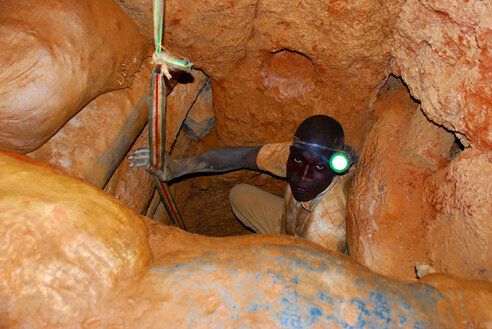The words leapt off the page at me: "The increase of child labour (due to the food crisis) was believed to largely be in the areas of domestic work (primarily affecting girls) and work in mines (affecting slightly more boys than girls). Child protection concerns surrounding domestic labour and mining have been widely documented, including elevated risks of sexual exploitation, prostitution, drugs, and physically dangerous labour."
This assessment was commissioned by the child protection cluster in Mali where I was heading. I wondered how a 'simple' food crisis could create such a web of problems.
It was my first time to Mali and as the plane started its descent, the landscape was dramatically different from that in Niger. This is a lush green country. The capital Bamako is well developed with diverse architecture and a busy highway. Its burst of development was partly due to Libyan aid during the Gadaffi era. The cost of living is high. A soft drink costs 2500 CFA (US$5)! I wrote a note to myself: "Drink water only".
The emergency in Mali has different characteristics than in Niger. There are no camps or large scale food programmes that one sees in the media where thousands of women queue for rations. However, one of the ways in which it is manifested is in child labour. Thousands of children have dropped out of school to go find work to help support the family.

One such child is 15 year old Bamba. He is from a farming family in rural Kita. He said last year's harvest was bad, as the amount of millet and maize they reaped was too little so his family sent him to dig for gold in a traditional Malian gold mine 200km away.
"My arms hurt, my back hurts, my chest hurts," he tells me while showing me the calluses in the palm of his hands from cutting logs. "I would prefer to be in school. I want to be a doctor to heal children but I have to work and send money home for my family."
Another food-crisis victim is Youssouf, 15, who turned to begging on the streets of Bamako. He told me it was scary on the streets, having to jostle with the other boys for a few CFAs. On good days he would earn 100 CFA (20 cents) but he needs a lot more because his mother owes 50,000 CFA in rent arrears.
He's been rescued from the streets by Enda Mali, an NGO that specialises in street children. He's now learning to be a tailor but his vocational training comes with no food. Sometimes he goes for two days without a meal but he's no longer on the streets and he has people he could turn to.
Mamadou Sacko from Enda tells me that since the food and IDP crises he's seen more than a 50% increase of street children. They've taken in nearly 100 per cent more children than they budgeted for this year and at the current rate, it will triple by the end of the year - all due to the food crisis and displacement of children due to fighting in the north.
